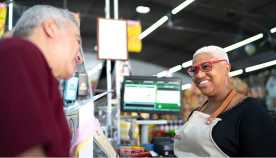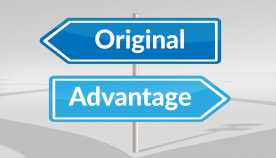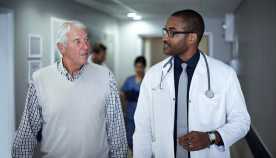AARP Eye Center
- right_container
- Health
- Money
- Work & Jobs
- Social Security
- Medicare
- Caregiving
- Games
- Travel
- More...
- Entertainment & Style
- Family & Relationships
- Personal Tech
- Home & Living
- Auto
- Staying Sharp
- Podcasts
- Videos
Greensboro Historical Museum
Discover & Learn
The Greensboro Historical Museum strives to open Greensboro’s history in ways that will inspire, challenge and even transform you.
Whether you’re a first-time visitor, a teacher who would like to bring a class, an amateur historian or a child at heart, the museum will help you discover history in a whole new way. The menu on the left will help you get started.
Educational Philosophy
We aspire to make the museum’s stories and exhibitions relevant, accessible, and engaging by serving you, our diverse audience, both on- and off-site, through fun and interactive public programs, tours and educational resources. In this way, we challenge you to make deeper and more vibrant connections, not only with history, but with your own story and ultimately with the wider community in which you live.
To stimulate enjoyable, lifelong, and historically-minded learning, we seek to offer resources that are:
- fun and engaging
- object-based, yet visitor-centered
- meeting standards for physical and intellectual accessibility
- based upon professional standards for museum education
- supported by proven educational principles, current teaching practices, and learning theories
- anchored in national and North Carolina state curriculum standards
- informed by audience research and evaluation
- contributing to visitor service satisfaction
About Us:
The Greensboro Historical Museum’s web site is your source for stories and information on the history of the Piedmont area of North Carolina, particularly of Greensboro and Guilford County. The Greensboro Historical Museum celebrates Greensboro’s local culture and the city’s prominent place in American history. Collections document the many different nationalities and people who impacted the county’s history: Native Americans, Germans, African Americans, Quakers and Scots-Irish. Archives and artifacts relate to the lives of prominent Guilford County residents, such as David Caldwell, First Lady Dolley Madison, Governor John Motley Morehead, author O. Henry and educator Charles Henry Moore. For students, for families, for researchers, for everyone opportunities to study events in colonial Guilford County, the Civil War, the roots of the Civil Rights Movement, and the rise of textile manufacturing in the South.
With more than 17,000 square feet of stories, the Greensboro Historical Museum is bigger and better, making it the place to learn about Greensboro.
Beyond the walls of the museum, there is much more to see and do. Adjacent to the main museum is the Mary Lynn Richardson Park. Here visitors can enter the 18th and 19th century households of the historic Christian Isley House and Francis McNairy House, as well as the Hockett Blacksmith and Woodworking Shops and the First Presbyterian Church Cemetery.
A short four miles from the main campus, we offer even more. The David and Rachel Caldwell Historical Center, located down the street from Friendly Shopping Center and next to the Tanger Family Bicentennial Gardens and the Bog Garden, is also part of the museum. Programs and exhibitions at the Center chronicle the inspiring history of David Caldwell and his wife Rachel, as well as their contributions to local and national life prior to Greensboro’s founding in 1808.
AARP Events for Greensboro
-
Featured Event
Try Zumba Gold for Fitness and Brain Health
Wednesday, Mar 5, 2025 at 11:00 a.m. ET
Online Event
-
Featured Event
WWAD Winston
Saturday, Mar 8, 2025 at 10:00 a.m. ET
Newell-Massey Greenway
Winston-Salem, NC
-
Featured Event
Try Zumba Gold for Fitness and Brain Health
Wednesday, Mar 12, 2025 at 11:00 a.m. ET
Online Event

- Immediate access to your member benefits
- Discounts on travel and everyday savings
- Subscription to AARP The Magazine
- FREE second membership

























































